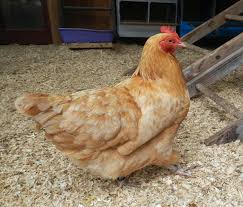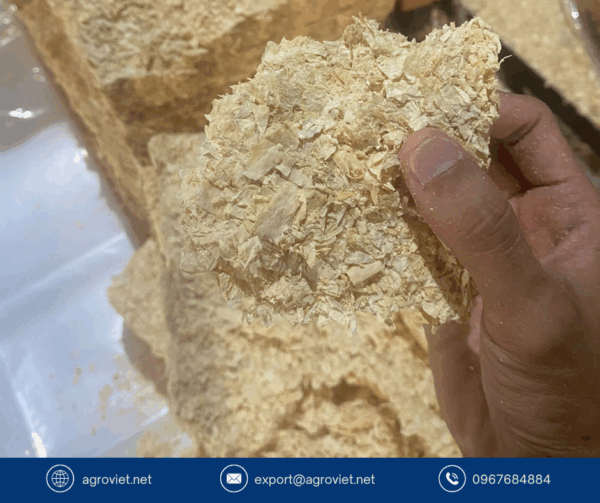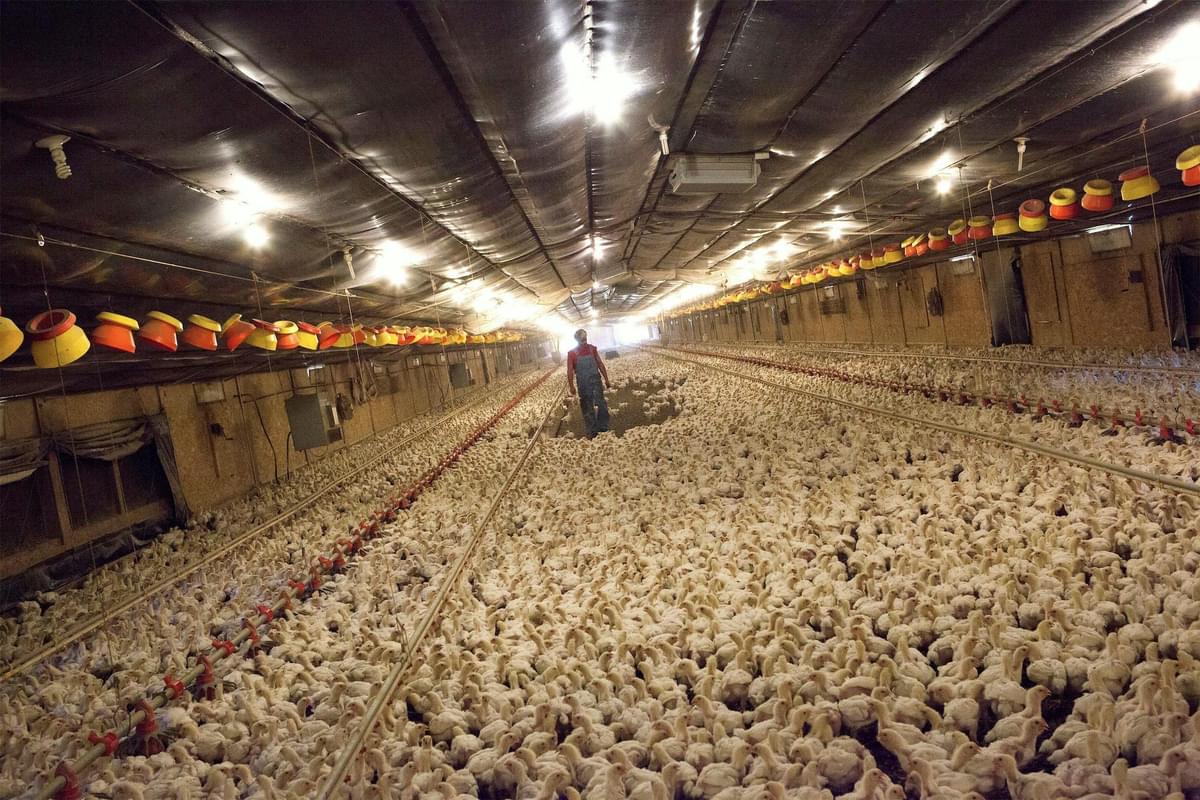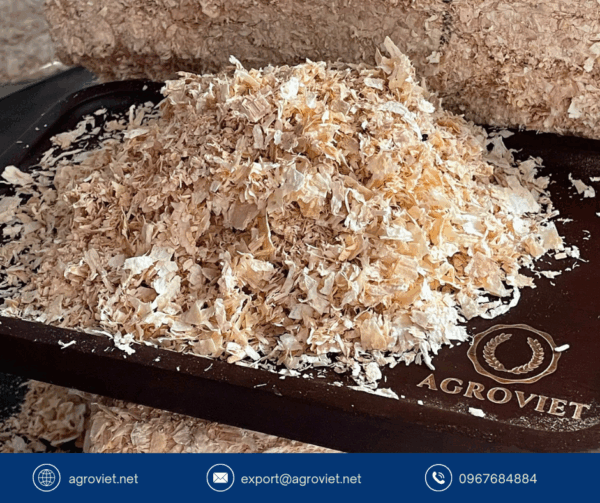The Role of Bedding in Preventing Salmonella Spread in Poultry Houses
Introduction to Salmonella in Poultry Houses
Salmonella is a major bacterial pathogen in poultry production, posing significant risks to bird health, food safety, and farm profitability. Contaminated litter, particularly wet or soiled bedding, serves as a primary reservoir for Salmonella species, leading to flock infections and potential human foodborne illnesses. Proper bedding management is critical for controlling its spread. Clean wood shavings, with their high absorbency and hygienic properties, are an effective solution for reducing contamination. Drawing on research from a 2019 ScienceDirect study, this post explores how poor bedding contributes to Salmonella spread and why wood shavings are essential for prevention.
Understanding Salmonella in Poultry
Salmonella, particularly Salmonella enterica serotypes like Enteritidis and Typhimurium, is a leading cause of bacterial infections in poultry. It colonizes the intestinal tract, spreading through feces and contaminating litter, water, and feed. Infected birds may show reduced growth, lower egg production, or no symptoms, making detection challenging. According to the ScienceDirect study, Salmonella contamination in poultry houses can lead to flock infection rates of 10-30%, with economic losses from reduced productivity and carcass condemnation costing $0.05-$0.20 per bird. Human health risks are significant, as contaminated poultry products cause millions of foodborne illnesses annually.
How Salmonella Spreads in Poultry Houses
It spreads through fecal-oral transmission, thriving in moist, organic-rich environments like poultry litter. Wet bedding, contaminated with manure, provides ideal conditions for bacterial survival and proliferation. The ScienceDirect study highlights that it can persist in litter for weeks, especially in high-moisture conditions, and spreads via dust, insects, or equipment. Birds ingest the bacteria while pecking at contaminated litter, leading to intestinal colonization. Poor litter management increases contamination risk by 25%, particularly in houses where bedding is reused or infrequently replaced, a common practice in some U.S. operations.
The Role of Wet and Soiled Bedding
Wet and soiled bedding, such as straw or low-quality sawdust, exacerbates spread. Moisture from water spills, high humidity, or poor ventilation creates a damp environment where Salmonella thrives. Soiled litter, laden with manure, serves as a nutrient source for bacteria, allowing them to multiply rapidly. The study notes that litter moisture levels above 30% significantly increase Salmonella survival, with bacterial loads reaching 10^6 CFU/g in wet conditions. Infrequent bedding replacement, sometimes as rarely as once a year in some U.S. farms, further amplifies contamination, posing risks to flock and consumer health.
Health and Economic Impacts of Salmonella
Salmonella infections compromise poultry welfare, causing stress, reduced feed efficiency, and mortality rates of 5-10% in severe cases. Infected flocks produce lower-quality meat and eggs, leading to rejections during processing and export losses. The economic impact includes treatment costs, reduced productivity, and regulatory penalties, with U.S. poultry industries facing annual losses of $1 billion due to Salmonella-related issues. For consumers, contaminated poultry products contribute to 1.35 million foodborne illnesses yearly in the U.S., increasing public health costs and industry scrutiny.
Why Poor Bedding Worsens Salmonella Spread
Poor bedding, such as reused or compacted materials, fails to absorb moisture effectively, creating a breeding ground for Salmonella. Straw and corncob bedding retain water, fostering bacterial growth, while fine sawdust generates dust that spreads via inhalation or contact. Inadequate litter depth or infrequent cleaning allows manure to accumulate, increasing bacterial loads. The ScienceDirect study emphasizes that poor bedding management correlates with higher Salmonella prevalence, particularly in high-density broiler houses where moisture and organic matter accumulate rapidly.
Watch this: https://www.youtube.com/watch?v=A-OULjlCHg4
The Importance of Wood Shavings
Clean wood shavings are a highly effective bedding solution for preventing Salmonella spread. Their ability to absorb up to 200% of their weight in moisture keeps litter dry, reducing conditions conducive to bacterial survival. Wood shavings also promote aeration, preventing the anaerobic environments where Salmonella thrives. Unlike straw, which retains moisture, or sawdust, which creates dust, wood shavings maintain a loose, hygienic surface that minimizes bacterial proliferation. By keeping litter moisture below 20%, wood shavings significantly reduce contamination risks.
Scientific Evidence Supporting Wood Shavings

The 2019 ScienceDirect study demonstrates that bedding type directly impacts Salmonella prevalence in poultry houses. Wood shavings reduce litter moisture and bacterial loads by up to 40% compared to straw, lowering detection rates. Their coarse texture prevents caking, ensuring a dry, clean environment that disrupts bacterial survival. Research also shows that wood shavings decrease airborne Salmonella transmission by reducing dust, with flocks on shavings exhibiting 20-30% lower infection rates. These findings underscore wood shavings as a critical tool for Salmonella control and food safety.
Key Benefits of Wood Shavings for Poultry Bedding
-
Moisture Control: Absorbs water and manure, maintaining dry litter to inhibit Salmonella growth.
-
Hygienic Properties: Reduces bacterial and fungal proliferation, minimizing contamination risks.
-
Low Dust: Decreases airborne its spread, protecting respiratory and gut health.
-
Comfort: Provides a soft, loose surface, reducing stress and supporting flock welfare.
-
Cost-Effective: Durable, requiring less frequent replacement than straw or other materials.
Consequences of Neglecting Proper Bedding
Failing to use absorbent, hygienic bedding like wood shavings increases spread, leading to severe health and economic consequences. Infected flocks face reduced growth rates, higher mortality, and processing losses, costing farmers $0.10-$0.50 per bird. Contaminated products risk recalls and regulatory action, damaging industry reputation. Poor bedding also compromises bird welfare, causing stress and discomfort that exacerbate infections. The ScienceDirect study warns that neglecting litter management can lead to persistent reservoirs, threatening both poultry and human health.
Practical Tips for Using Wood Shavings
To maximize the benefits of wood shavings, poultry farmers should:
-
Use high-quality, untreated softwood shavings, such as pine, to avoid chemical contamination.
-
Maintain a litter depth of 4-6 inches for optimal absorbency and comfort.
-
Regularly turn litter to prevent caking and ensure consistent dryness.
-
Monitor drinker systems to prevent leaks, reducing moisture accumulation.
-
Store shavings in dry, ventilated areas to prevent mold contamination.
Complementary Strategies for Control
In addition to wood shavings, these practices help prevent Salmonella spread:
-
Ventilation: Ensure 6-8 air changes per hour to reduce humidity and dust.
-
Sanitation: Clean and disinfect houses between flocks to eliminate reservoirs.
-
Biosecurity: Limit access to poultry houses and use footbaths to prevent pathogen introduction.
-
Feed Hygiene: Use Salmonella-free feed and store it in dry conditions.
-
Vaccination: Implement vaccines to boost flock immunity.
Economic and Welfare Impacts
Wood shavings improve poultry welfare by reducing infections, ensuring better growth rates and feed efficiency. Healthy flocks enhance profitability, saving $0.05-$0.20 per bird in treatment and condemnation costs. The Poultry Site notes that proper litter management supports export markets, which value Salmonella-free products. Wood shavings, while an upfront investment, reduce long-term expenses due to their durability. Their compostable nature aligns with sustainable farming, meeting consumer demand for ethical poultry production.
Addressing Challenges with Wood Shavings
Challenges include sourcing dust-free, high-quality shavings and managing compaction in high-traffic areas. Farmers should select premium shavings from reputable suppliers and store them in dry conditions to prevent mold. Regular litter turning maintains absorbency, while ventilation reduces dust. With proper management, wood shavings offer significant benefits in controlling Salmonella and supporting flock health.
Conclusion
Wet, soiled bedding is a key driver of its spread in poultry houses, threatening bird health, food safety, and farm economics. Clean wood shavings, with their superior moisture control and low-dust properties, are a proven solution to reduce contamination. Supported by research from ScienceDirect, wood shavings maintain a dry, hygienic litter environment, lowering infection rates and enhancing welfare. By prioritizing wood shavings and adopting robust management practices, poultry farmers can prevent its spread, protect public health, and ensure sustainable, profitable operations.
Read more: https://vietnambestwood.com/general/sawdust-solution-to-ammonia-control/
